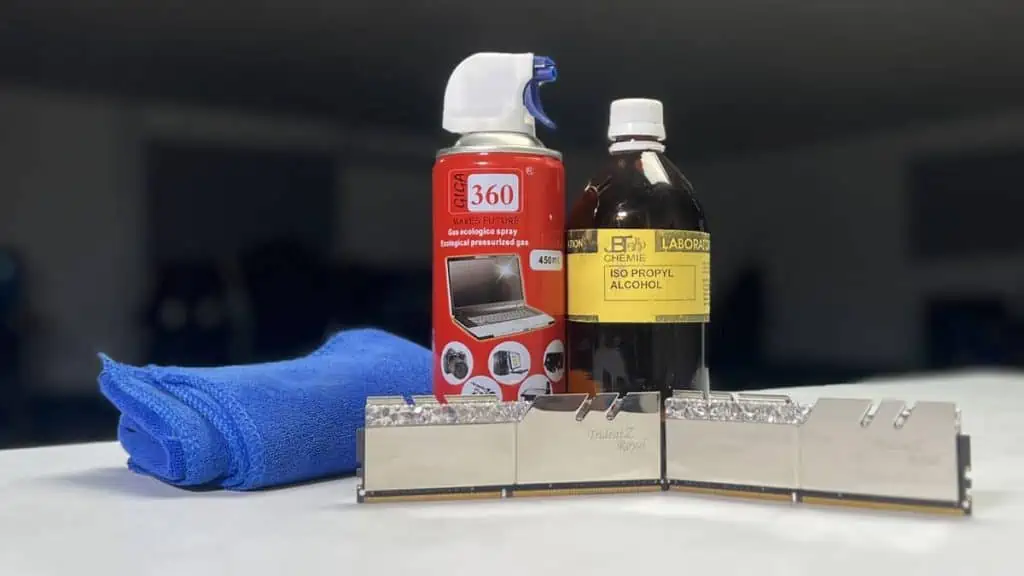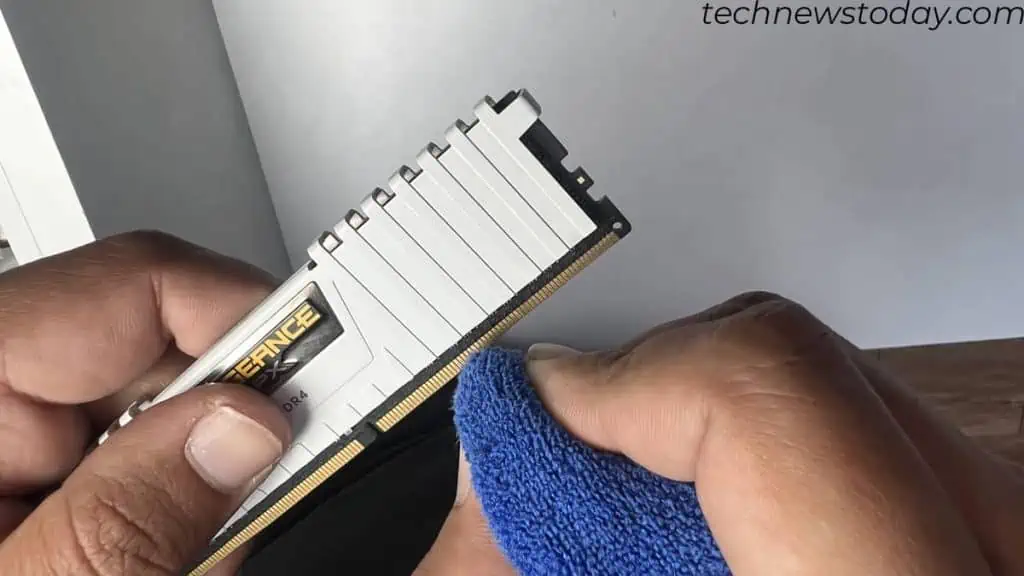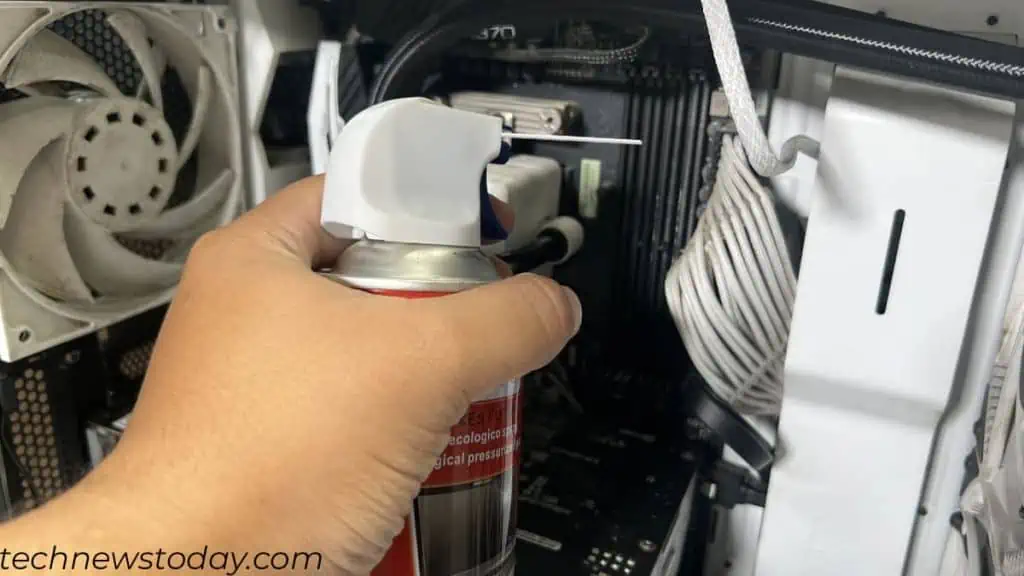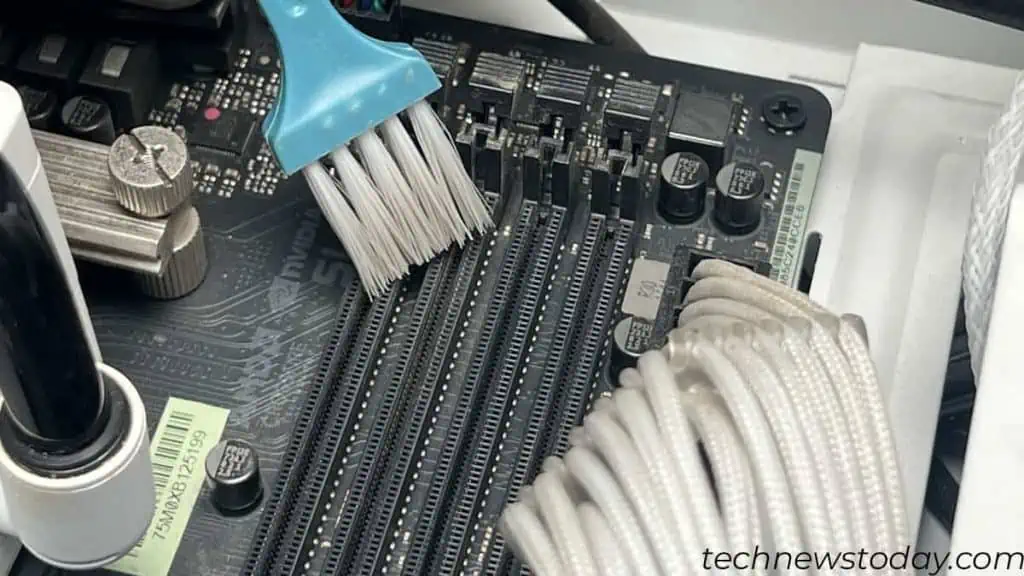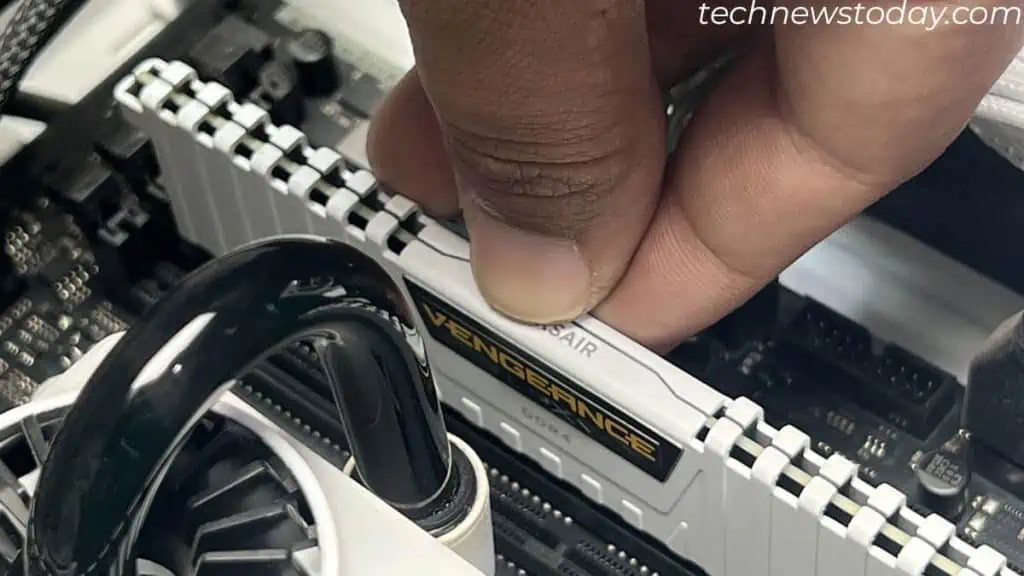The most effective way to clean memory modules is by using an isopropyl alcohol on a lint-free cloth. As for the slots, you can use a soft brush and compressed air.
You first need to prepare your PC, access the motherboard, and remove the memory unit. Then, you can start with the cleaning process.
These are highly conductive components and you need to be extra careful when cleaning them. A small mishap and your entire RAM or even the motherboard may be rendered useless.
Here, I have demonstrated the cleaning process on Corsair DDR4 8GB memory stick and memory slot on my Asrock x370 Taichi.
Prerequisites
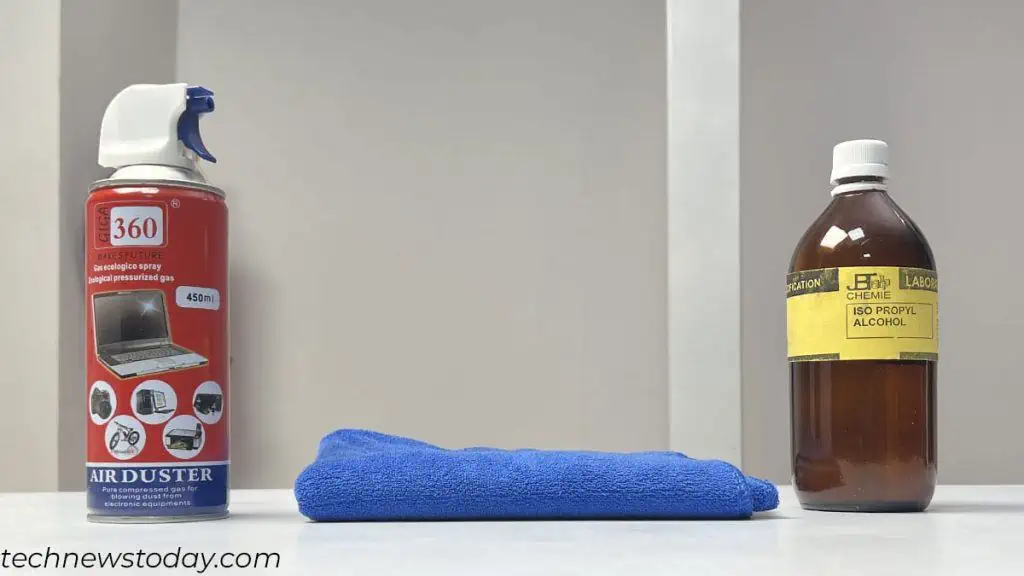
Before you begin, it’s best that you have the following things ready. You may not need all these things if you are just cleaning a memory stick or just the slot
- Rubbing Alcohol for the memory module
- Compressed Air for both
- Soft lint-free cloth or eraser for RAM stick
- Soft Brush for both
After you’ve gathered the necessary components, turn off the PC. Make sure that you remove any AC power source. Now,
- Discharge the capacitors before handling the motherboard. To discharge, press the power button three or four times or press it for 10 seconds.
- If the PC is on for some time, let the components cool before you start disassembling. Alcohol on a hot component may produce toxic or harmful fumes.
- Ground yourself before handling any internal components.
Now that you have prepped the PC, you can now start by opening the PC case.
Remove Side Panel
Check the side panel for screws. Depending on your PC case, the screws could be on the back or the sides.
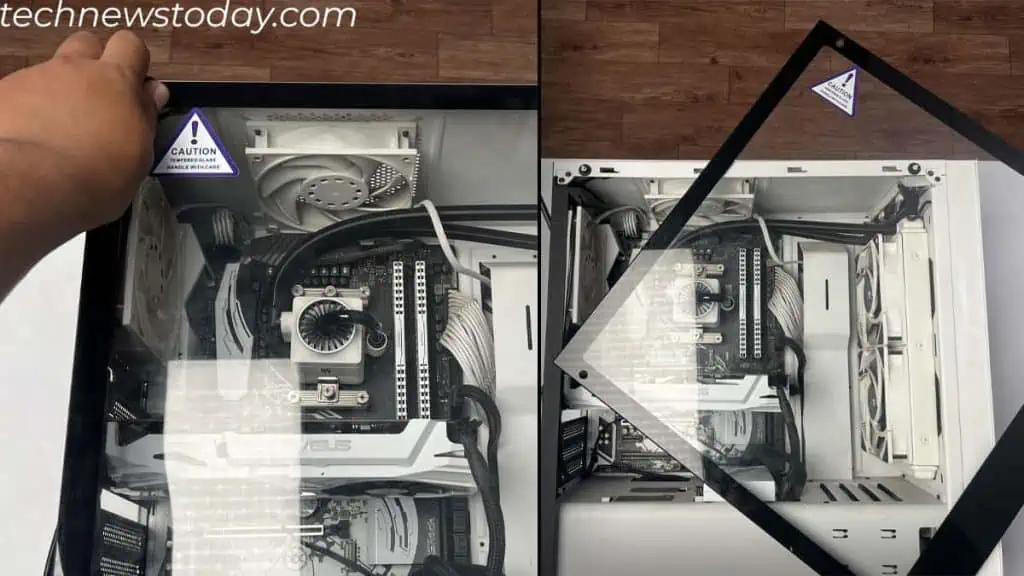
Remove these screws and place them on a magnetic tray. Gaming or high-end PC cases will have thumb screws that hold the side panel. If so, you can simply remove them without a screwdriver.
Once all the screws are out, take the side panel out of the case. If you have a tempered glass PC case, handle them with care.
After that, lay the PC on the side.
Remove Memory Stick
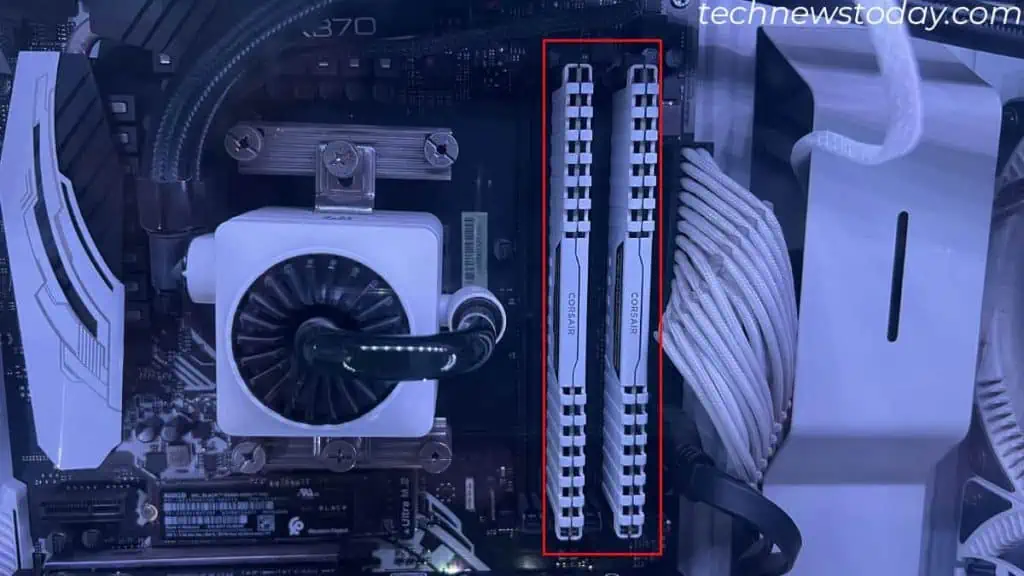
Now that you have access to the motherboard, you need to remove the RAM stick. Locate the RAM in your motherboard. It is located near the CPU and should look something like the picture above.
The memory slot should have one or two locks on either side depending on the motherboard. Push this lock to unlock the RAM from the memory slot. Gently pull the memory modules out of the memory.
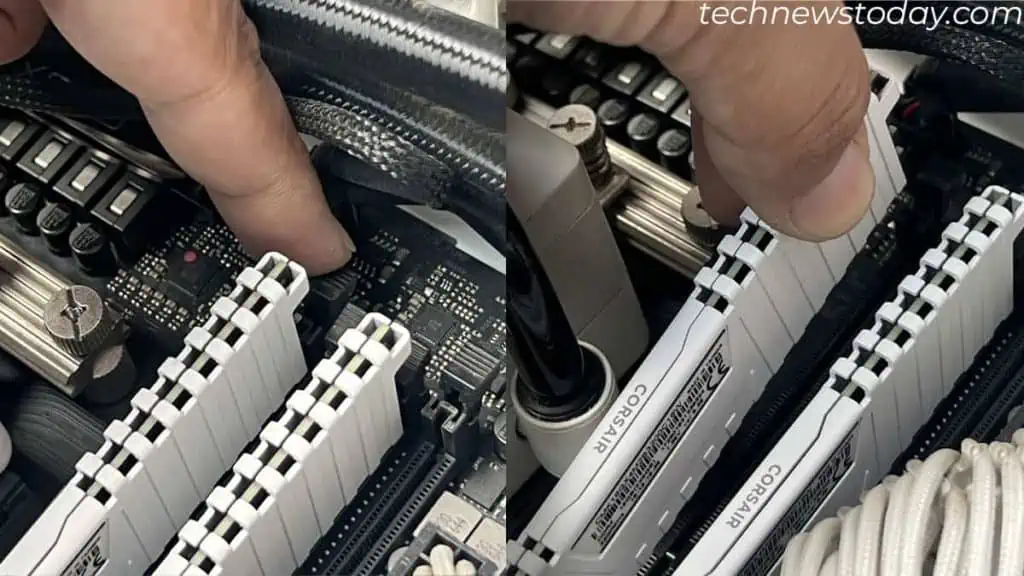
Check if there are any dark stains on the connectors on the RAM. If it’s dirty you need to clean it right away. Also, see for dust particles on its heatsink. If it’s dusty it might need some cleaning as well.
Clean RAM Stick
Once the modules are out, first clean the dust off using pressurized air. Use a small burst of air until you clean all the dust particles.
RAM stays upright in the PC case. So clean off any dust on the surface of the module.
Once you are done, clean them using rubbing alcohol. Make sure that the alcohol you are using is rated safe for cleaning electronic devices. Here are the steps to clean them.
- Lightly soak the lint-free cloth with rubbing alcohol. Do not put the solvent directly into the connectors.
- Rub both sides of the gold-plated connector of the memory stick.

- Do not put excess pressure when cleaning. The module may get damaged or fall off.
You can also use an eraser to clean the connectors. Make sure that the eraser is clean and does not have any stains.
Once done, shake off any eraser shavings or particles. Rubber debris, being an insulator, may block the connectors. Make sure that none are sticking to the RAM.
You can again use alcohol or canned air to clean the rubber debris off the connectors. Let the solvent dry completely before you insert RAM.
Clean Memory Slot
Now that the modules are clean, it’s time to clean the memory slots. The memory slots are connected directly to the motherboard. So I do not recommend using any liquid solvent to clean them, instead clean them using pressurized air.
If you have all four memory slots occupied, dust and debris may not settle. But most users, including me, use two memory modules and the rest of the slots are empty.
You need to clean these slots thoroughly, especially if you plan on using them.
- Place the nozzle on one end of the slot at an angle and spray.

- Some dust particles may latch onto the surface and pressurized air may not work. In that case, try cleaning it using a soft brush.

- Make sure that you do not bend or scratch the metal connectors inside the slot.
- Slowly reach every nook and corner of the slots.
Once the slots are clean, dust from the slots is likely to settle on other motherboard components. Make sure that you clean them as well.
If the components still have dust and debris, the PC might not POST and will show a black screen.
Reassemble Components
Once everything is clean and dry, insert the RAM back into the motherboard. If you have two memory modules, make sure that you place them in the correct slot. This way it runs in a dual-channel mode.
If you only have one RAM stick, you can install them on any slot. But I recommend the second slot.
- Align the notch in RAM and the memory slot.
- Insert RAM into the board and press it until the lock snaps.

- Place the side panel back into the PC case and screw it in place.
Once you reassemble the RAM, I also suggest that you test your RAM for errors.

